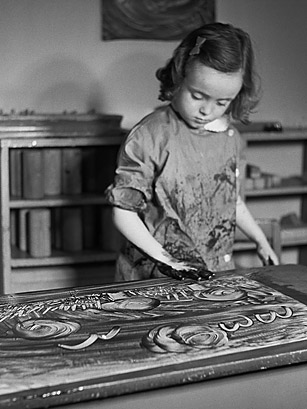
Now synonymous with tiny handprints adorning bulletin boards around the globe, finger paint was first used in art education in 1931. American teacher Ruth Faison Shaw was in Italy when she developed a system that not only would teach kids about art but could also act as a technique for child therapy, a cause Shaw devoted her life to. In her 1934 book Finger Painting, a Perfect Medium for Self-Expression, Shaw wrote that adults should let children be children, even if it meant letting them make a mess. The theory was embraced by educators, and in 1936, the painting technique reached massive popularity and Shaw finger paints and paper were being produced by the Binney & Smith Co., owned by the inventors of the Crayola crayon. Finger painting peaked in the 1930s during the progressive education movement and was widely used in education systems until the end of the 1960s.